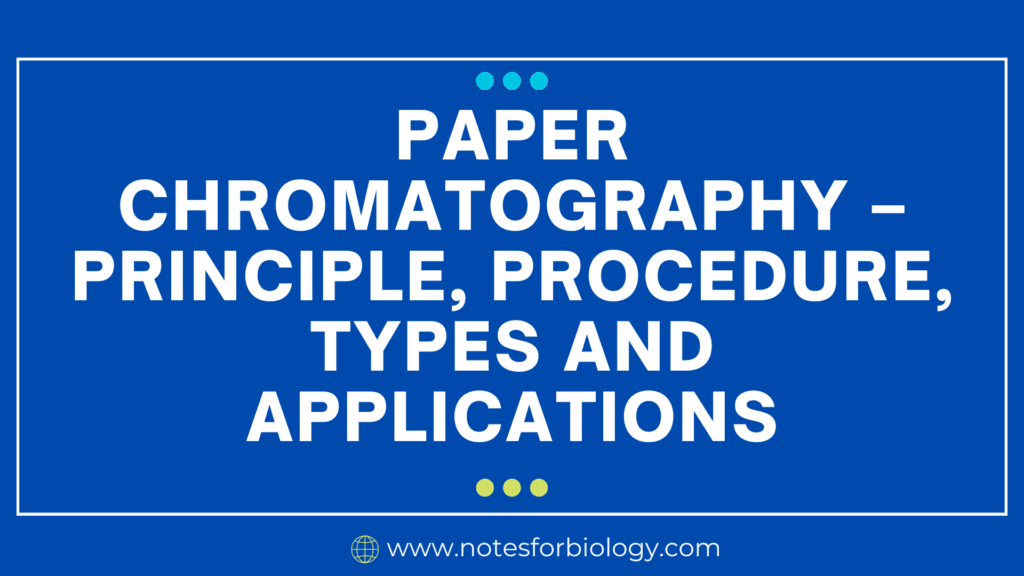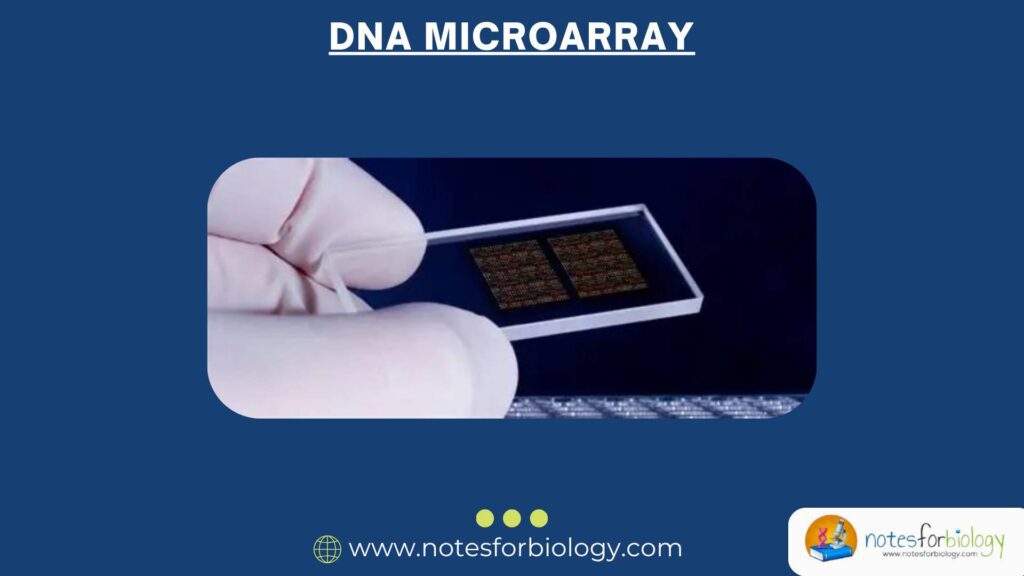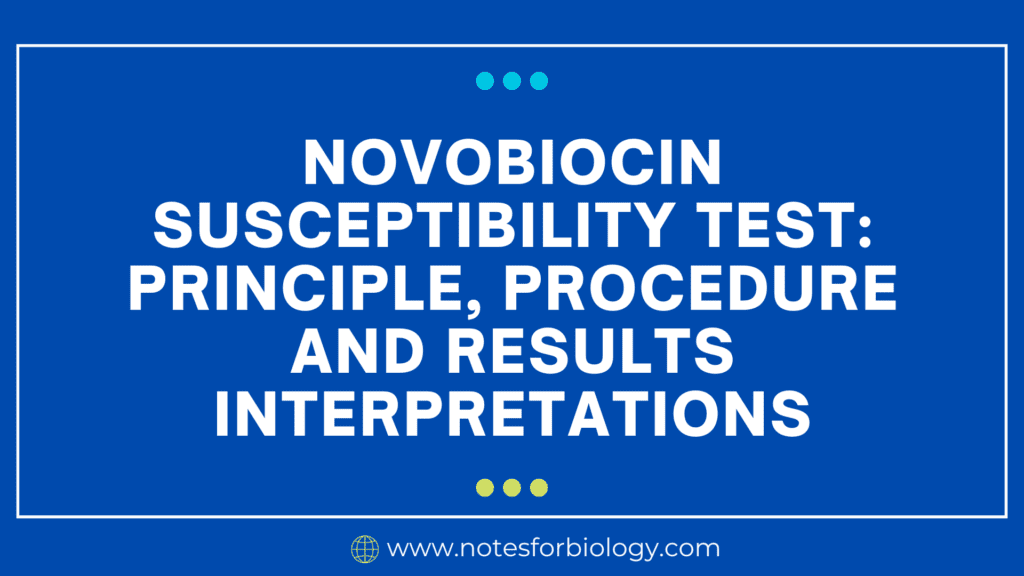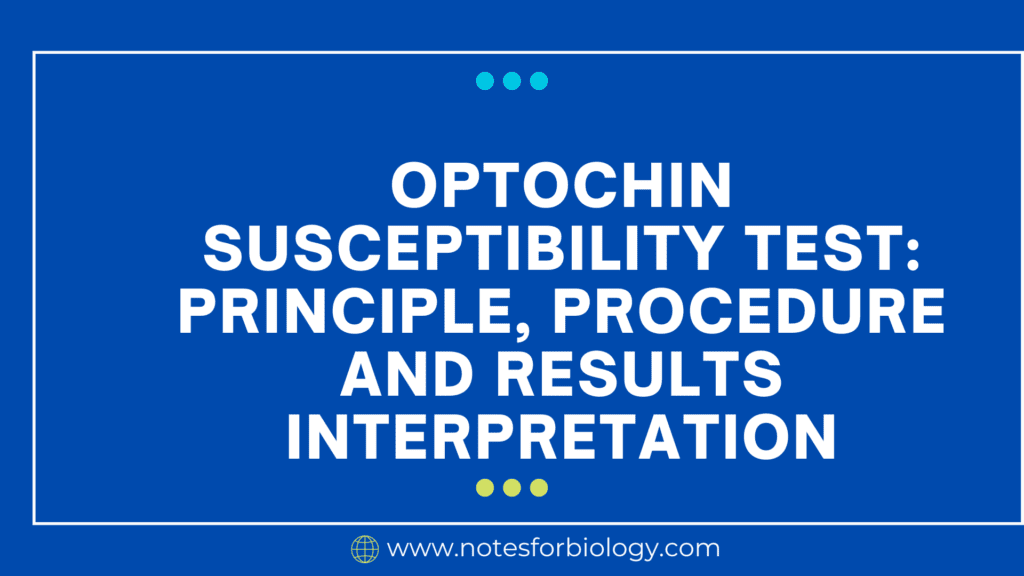Paper chromatography, a simple yet powerful technique, is a widely used analytical method for separating and identifying components within a mixture. This technique relies on the principle of differential partitioning – the ability of different substances to distribute themselves differently between two immiscible phases: a stationary phase (paper) and a mobile phase (solvent).
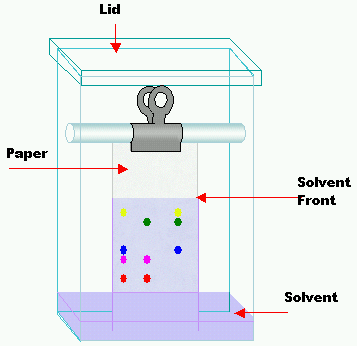
Table of Contents
The Principle of Differential Partitioning
Imagine a race where different runners have varying speeds and affinities for different terrains. In paper chromatography, the paper acts as the stationary phase, a “track” with varying “terrains” determined by its composition and properties. The mobile phase, the “runner,” is a solvent that moves along the paper, carrying the components of the mixture.
Each component in the mixture will interact differently with the stationary and mobile phases. Some components will have a higher affinity for the stationary phase and will move slower, while others will be more attracted to the mobile phase and move faster. This difference in movement creates distinct bands or spots on the paper, allowing us to separate and identify the components of the mixture.
Procedure: A Step-by-Step Guide
The procedure for paper chromatography is relatively straightforward:
Sample Preparation: The mixture to be separated is dissolved in a suitable solvent, forming the sample solution.
Paper Preparation: A strip of chromatography paper, the stationary phase, is chosen. The type of paper depends on the nature of the mixture being separated.
Spotting the Sample: A small drop of the sample solution is carefully placed near the bottom of the chromatography paper, forming a “spot.”
Developing the Chromatogram: The paper is then placed vertically in a closed container containing the mobile phase. The mobile phase rises up the paper by capillary action, carrying the sample components along with it.
Separation and Detection: As the mobile phase ascends the paper, the components of the mixture separate based on their different affinities for the stationary and mobile phases. This results in distinct bands or spots on the paper, each representing a different component.
Visualization: To visualize the separated components, a suitable method is employed. This can be done using a UV lamp, iodine vapor, or a chemical spray that reacts with specific components to create visible spots.
Types of Paper Chromatography
There are two main types are,
Ascending Paper Chromatography
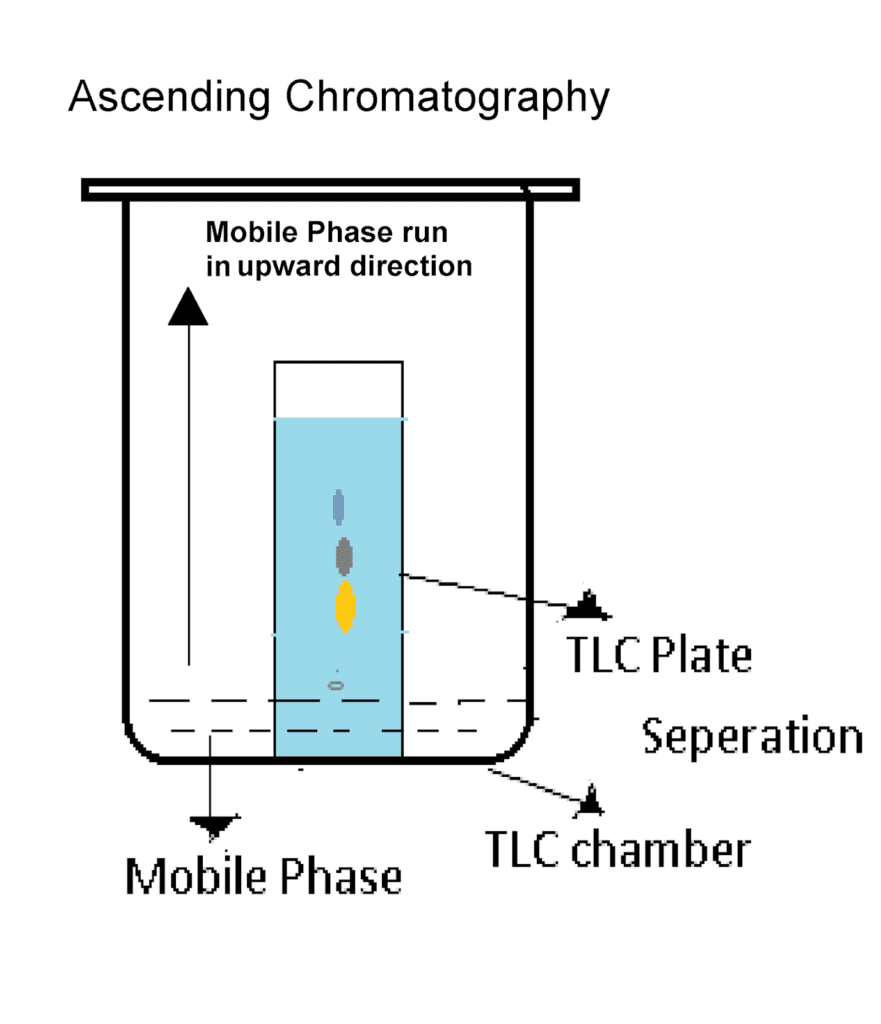
This is the most common type, where the mobile phase ascends upwards through the paper.
Descending Paper Chromatography
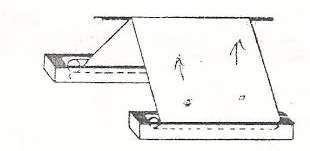
In this method, the mobile phase descends downwards through the paper. This technique offers better separation and faster results but is more complex and requires special equipment.
Applications: Unlocking the Potential of Paper Chromatography
Paper chromatography finds extensive application in various fields, including:
Chemistry: Identifying and quantifying components in mixtures like dyes, inks, and pharmaceutical products.
Biochemistry: Analyzing amino acids, sugars, and other biological molecules.
Environmental Science: Monitoring pollution levels and identifying contaminants in water and air samples.
Food Science: Assessing the quality of food products and detecting adulteration.
Forensic Science: Identifying substances present at crime scenes.
Advantages and Disadvantages
Paper chromatography offers several advantages:
Simplicity and low cost: It requires minimal equipment and reagents, making it an accessible technique.
Versatility: It can be used to separate a wide range of substances.
Qualitative and semi-quantitative analysis: It provides information about the components present and their relative amounts.
However, it also has some disadvantages:
Limited resolving power: It may not be suitable for separating complex mixtures with very similar components.
Time-consuming: The development time can be relatively long, especially for complex mixtures.
Subjectivity: The results can be influenced by factors like the paper type, solvent system, and temperature.
Conclusion
Paper chromatography is a powerful analytical technique that provides a simple and cost-effective means of separating and identifying components within mixtures. Its wide range of applications across various scientific disciplines makes it an invaluable tool for research and analysis. While it may have some limitations, the simplicity and versatility of this method continue to make it a valuable tool in scientific exploration.
Frequently Asked Questions(FAQ)
Define chromatography?
Chromatography is an effective method for separating and examining the constituent parts of a mixture. Utilizing the mixture’s components’ differing affinities for a stationary phase and a mobile phase allows for this to be accomplished.
What are the types of Paper Chromatography?
The types of paper chromatography,
1. Ascending Paper Chromatography
2. Descending Paper Chromatography
Related Articles
Salmonella: morphology, antigenic structure, cultural and biochemical characteristics

